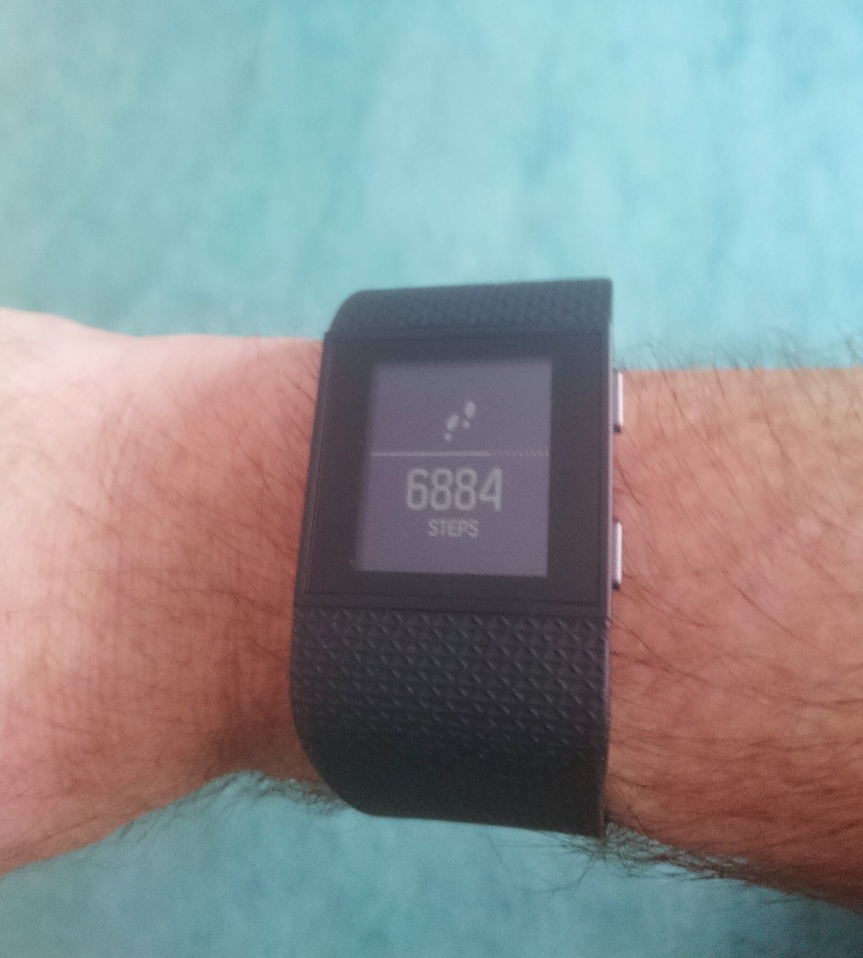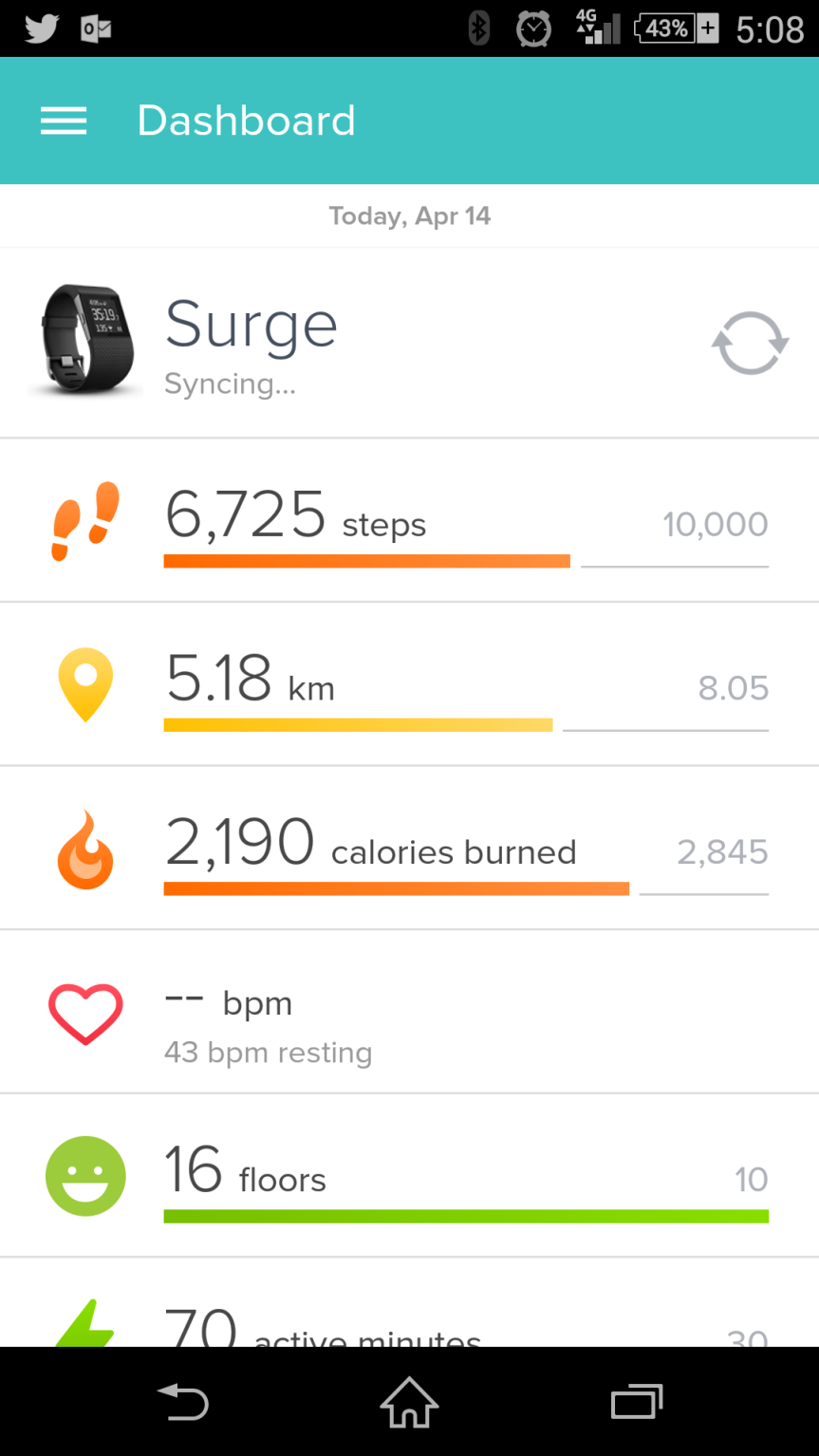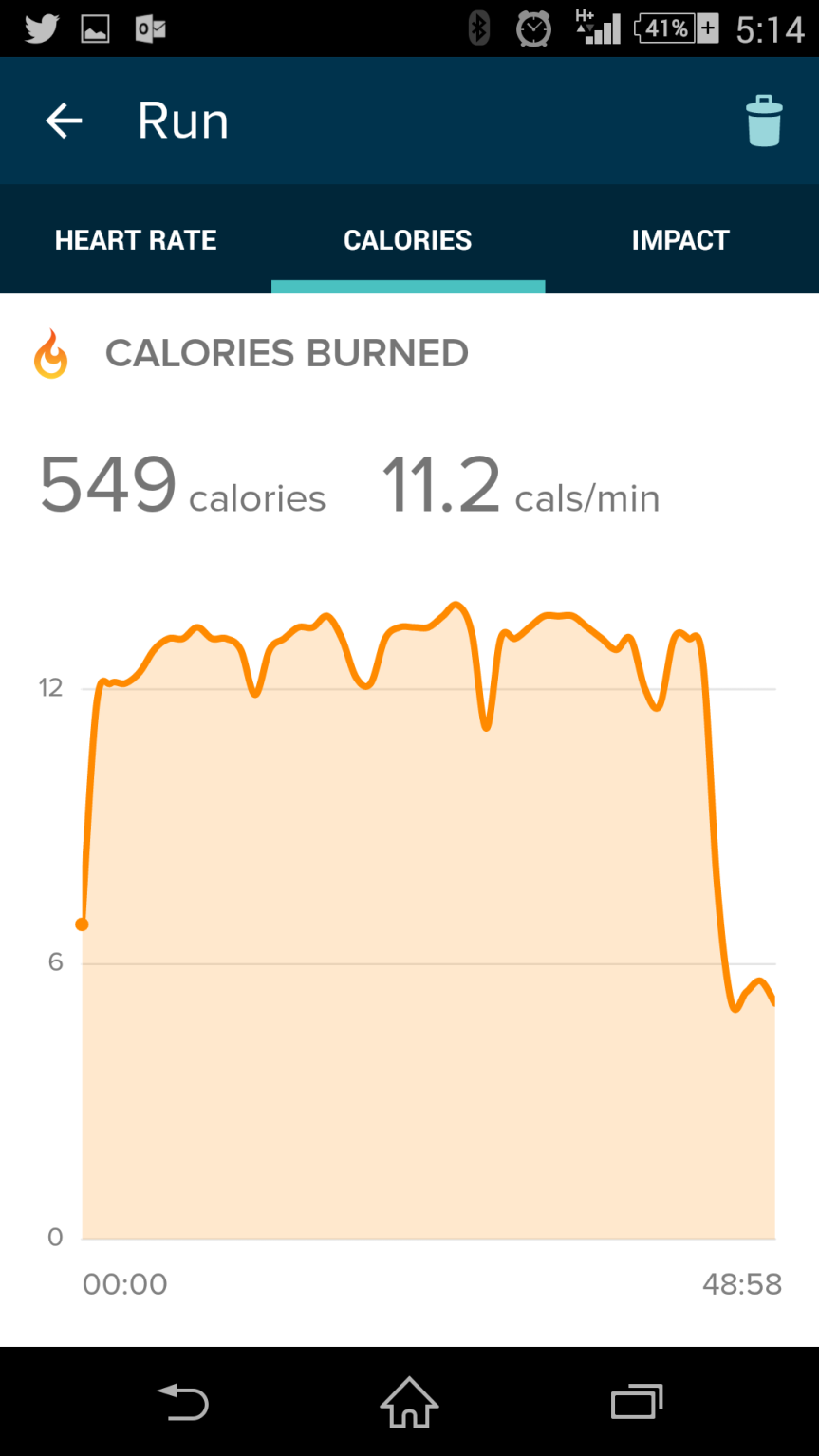Life’s not all fun in the sun, listening to music, chugging beer and eating pies. In a bid to keep my love-handles to less than a handful (any more is a waste) I’ve been on a mini fitness drive.
Exercise gives its own rewards obviously but a bit of tech does help sugar the pill so I recently invested in a “Fitbit Surge”. Unless you’ve just returned from off world somewhere (watching attack ships off the shoulder of Orion maybe) you’ll doubtless have seen people wearing one of the slew of fitness bands that have recently appeared everywhere. Each one performs different functions and each has its pros and cons. I guess the Surge is a bit like your average fitness band pumped up to the eyeballs on steroids.
In a move somewhat unlike my usual modus operandi I actually showed some patience and waited until a band came on the market that actually did most if not entirely all that I wanted of it
Unlike some of the bands currently on the market (e.g. The Jawbone Up – which my wife has) that are quite neat little wristbands in various colours, the Surge has more of a retro 70’s watch look going on. It’s quite a chunky beast the face of which is also a touchscreen interface for various apps and functions.
I admit I was initially sceptical about the use of fitness bands as the info they collected seemed a little arbitrary – I couldn’t really see much point in a sleep monitor for example. So what does the Surge do that changed my mind?
Well I’m a big fan of convergence where a single device manages to do a number of things that used to require several gadgets. And for my purposes the Surge does a pretty good job of handling multiple talks.
For a start any serious monitoring of running and cycling would usually need at least a GPS device (which could be a phone if you’re happy to see it discharge faster then usual as GPS is a battery hog) and a heart rate monitor.
The Surge includes both GPS tracking and a heart rate monitor so both those boxes are ticked.
In addition the heart rate monitor works by taking snapshots of the capillary action at the wrist and so doesn’t need a chest monitor – another plus in my book.
Heart Rate Monitor
The Surge actually does constant heart rate monitoring – another nice feature as it gives you a better measure for your resting HR and therefore better calculation of the various HR zones. The difference when you switch on HR recording for a particular exercise is that it increases the rate of monitoring, taking a snapshot a second rather than every five seconds (the lower rate presumably helps extend the battery life).
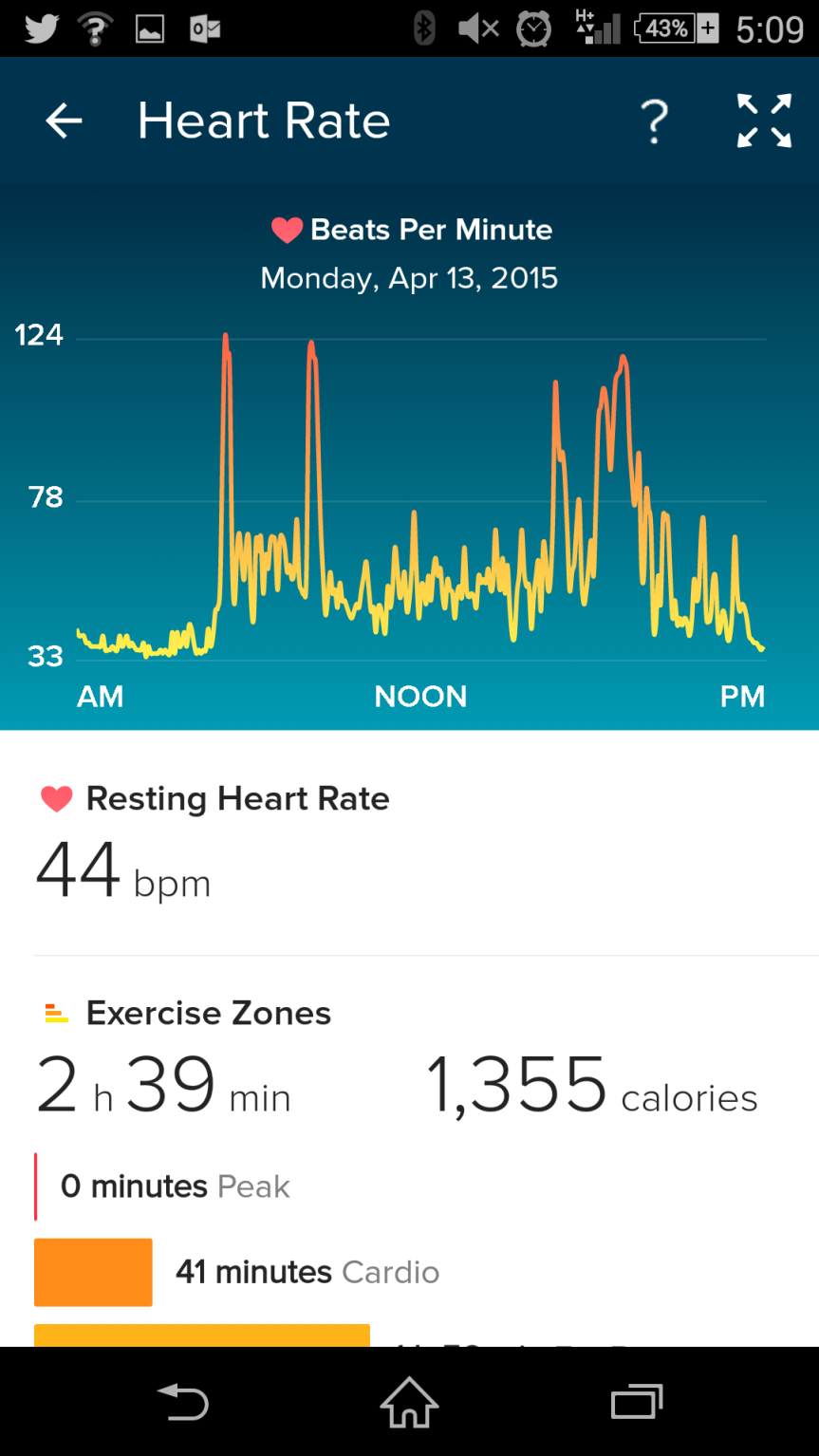
Control Music
The Surge also allows you to connect to your phone’s music player via Bluetooth so that you can control your tracks whilst exercising – another plus.
Calorie Logging
One thing it does which I thought would be a waste of time but is actually useful is to record food/calorie intake. It has various food databases which new includes one for the UK and a bar scanner, making it very easy to get accurate calorie figures. For me this has been a (good) habit-forming tool as it really brings home the number of empty calories I can take in during a day if I’m not careful.

Stats
The Surge syncs with both a phone app and a Windows/Mac application and provides enough stats and graphs to keep NASA happy
It’ll track how far you’ve run, speed, rate, value calories burned, calories in vs calories out, hours of sleep etc etc
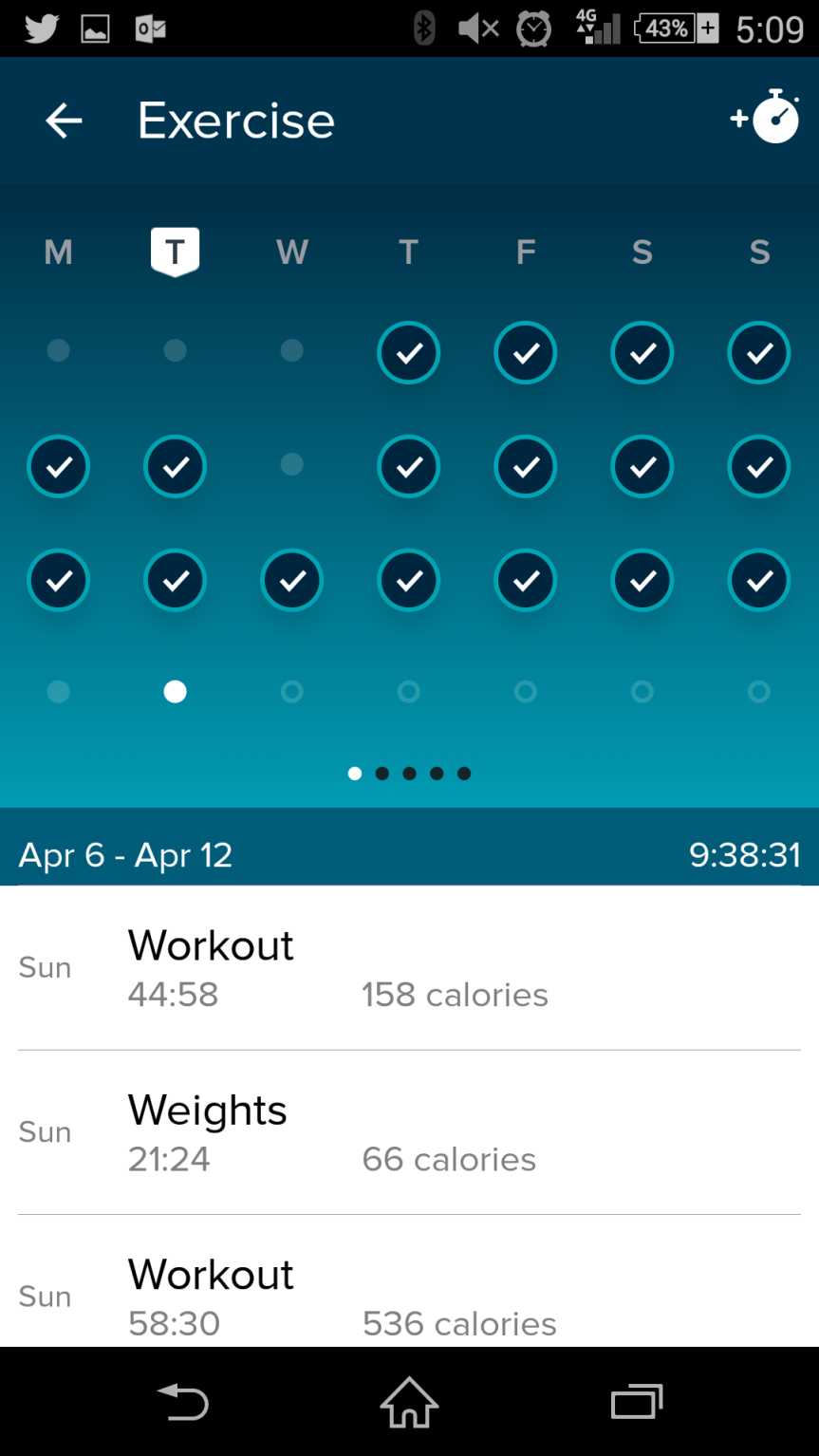
Battery Retention
I wear my surge constantly and do some form of exercise 4 or 5 days a week and I seem to be charging the Surge every 5 days or so which I am pretty happy about. And compared to some “fruit-branded” watches that’s a lifetime
Room for Improvement
So all good then? Not quite, there are some disadvantages and bug-bears
Additional Functionality
For a start even with all it provides, the Surge is maybe too much of a generalist for the fitness geek market it’s aiming for. For example if you’re really into cycling then you can take monitoring a lot further than the Surge allows with cadence and power monitors. However as it’s software-based additional features may yet be added.
Accuracy
I’ve seen some online complaints from more serious athletes (triathletes such as DC Rainmaker for example) that the HR monitor isn’t accurate enough. Not that I’ve obsessed over this or anything but I’ve compared the results to four different monitors (wahoo tickr, myzone, fixed cycle handle bar monitor and phone app) and I would say it’s pretty accurate – always within a couple of beats of each. What does appear to be an issue is a lag in getting to the correct reading, so if I do a sprint on the static bike the Surge will take maybe 30 seconds to register the HR jump compared to the Tickr. But it gets there eventually so over a full exercise session I would say it will capture most of the info.
GPS
Again, same issue. I can do a seven km run and the Surge will be out by 500m compared to Runkeeper on my android phone (which is out by a few additional hundred meters compared to Runkeeper on my wife’s iPhone). Now for me, I can live with this level of difference for the convenience etc that I get from the Surge but I understand that serious runners would take a dim view
However I read recently that they are issuing a GPS update soon (aimed at better battery retention) which may improve things, and again , software based means things can always be improved
It’s Good To Share
Lastly I’d like the Surge to better at sharing. For a start the HR monitor won’t currently talk to Runkeeper or Wahoo, it would be nice if it did as I could then do away with the HE strap.
And there is stats feed to Runkeeper but it’s not great.
Again though there is hope. Fitbit have announced an upcoming feed to Strava and also now provide an XML export function so things are again heading the right direction.
Conclusion
It’s a wham-bam HR monitoring, GPS mapping, Bluetooth music controlling beast – I’m pretty happy with it and for the areas where I find it lacking it seems to be heading in the right direction. A definite recommendation.

